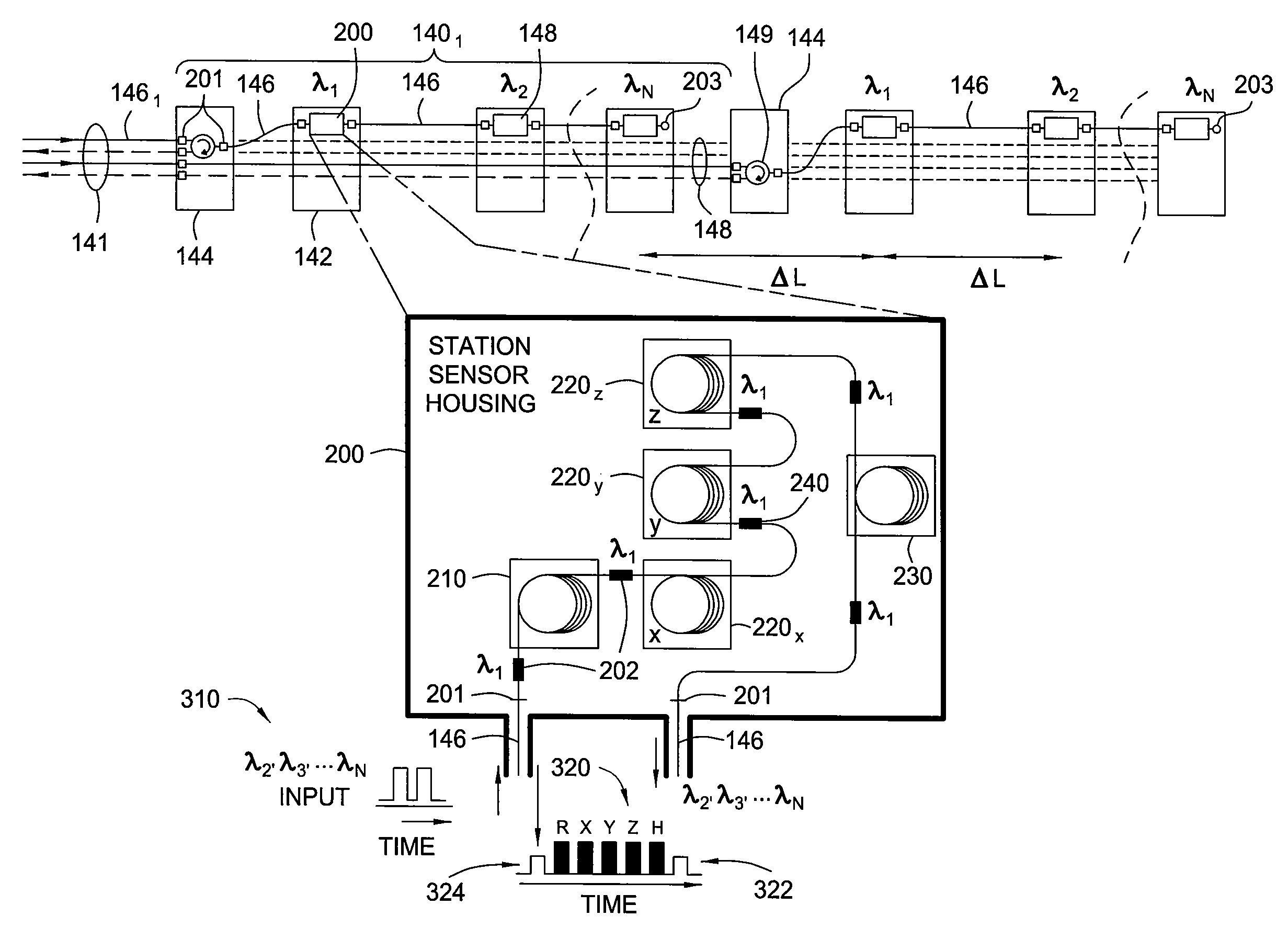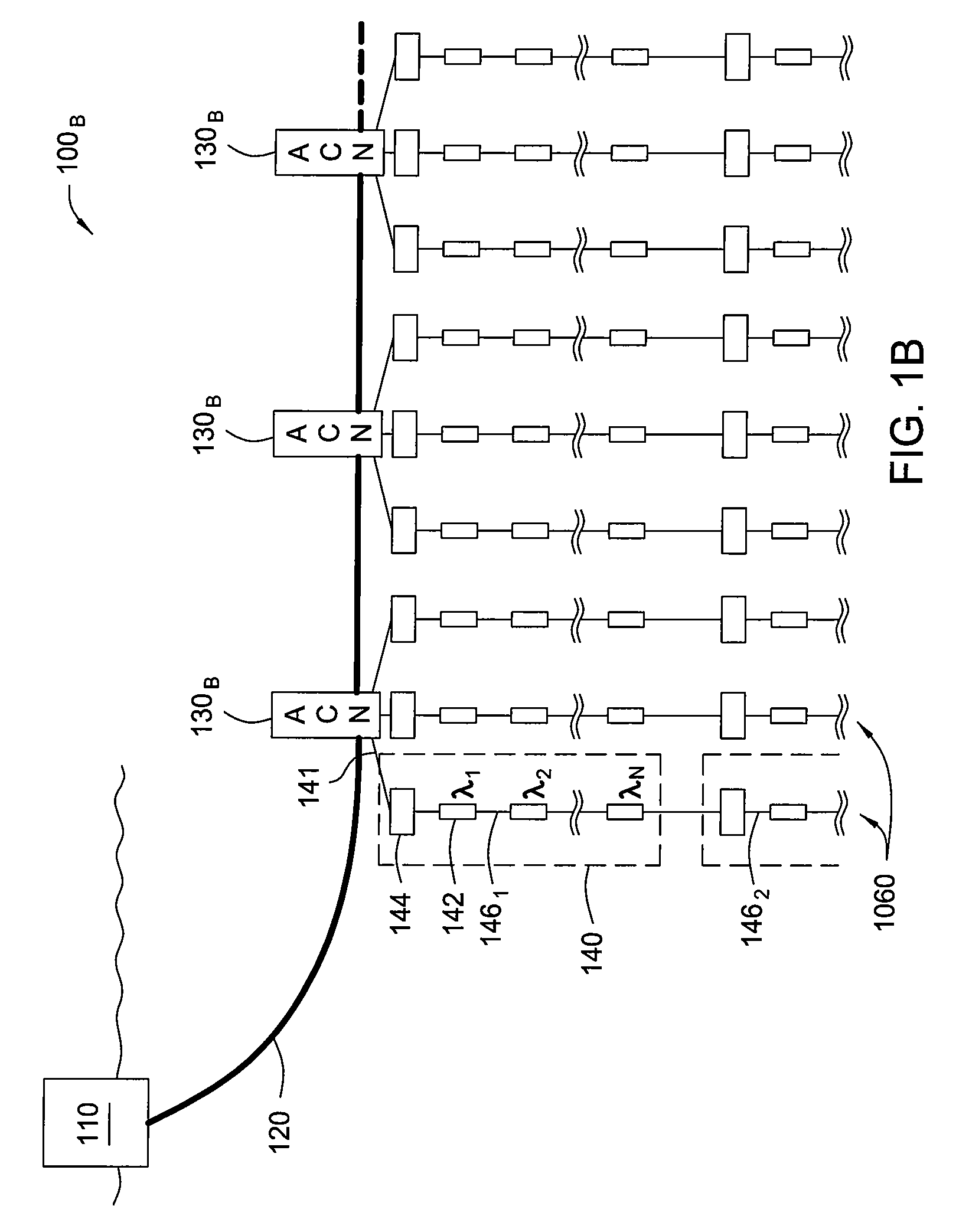Ocean bottom seismic sensing system
a seismic sensing and ocean bottom technology, applied in the field of seismic sensing, can solve the problems of interfering signals reflected back to the surface, typically limits to each, and the practical limit of how many sensors may be interrogated by a single fiber
- Summary
- Abstract
- Description
- Claims
- Application Information
AI Technical Summary
Benefits of technology
Problems solved by technology
Method used
Image
Examples
Embodiment Construction
[0032]Embodiments of the invention generally relate to seismic sensor systems and sensor station topologies, as well as corresponding cable and sensor station components, manufacturing and deployment techniques. For some embodiments, networks of optical ocean bottom seismic (OBS) stations are provided, in which sensor stations are efficiently deployed in a modular fashion as series of array cable modules deployed along a multi-fiber cable.
[0033]Interferometric sensors within each sensor station may share a common wavelength and be interrogated in a time division multiplexed (TDM) manner. Each sensor station, however, may utilize a different wavelength for its sensors, allowing multiple stations in series within an array cable module to be interrogated on a common “sensor” fiber utilizing wavelength division multiplexing (WDM).
[0034]For some embodiments, within each array cable module, only the sensor fiber is connected to the sensors at each station, while a multi-fiber tube “bypass...
PUM
 Login to View More
Login to View More Abstract
Description
Claims
Application Information
 Login to View More
Login to View More - R&D
- Intellectual Property
- Life Sciences
- Materials
- Tech Scout
- Unparalleled Data Quality
- Higher Quality Content
- 60% Fewer Hallucinations
Browse by: Latest US Patents, China's latest patents, Technical Efficacy Thesaurus, Application Domain, Technology Topic, Popular Technical Reports.
© 2025 PatSnap. All rights reserved.Legal|Privacy policy|Modern Slavery Act Transparency Statement|Sitemap|About US| Contact US: help@patsnap.com



